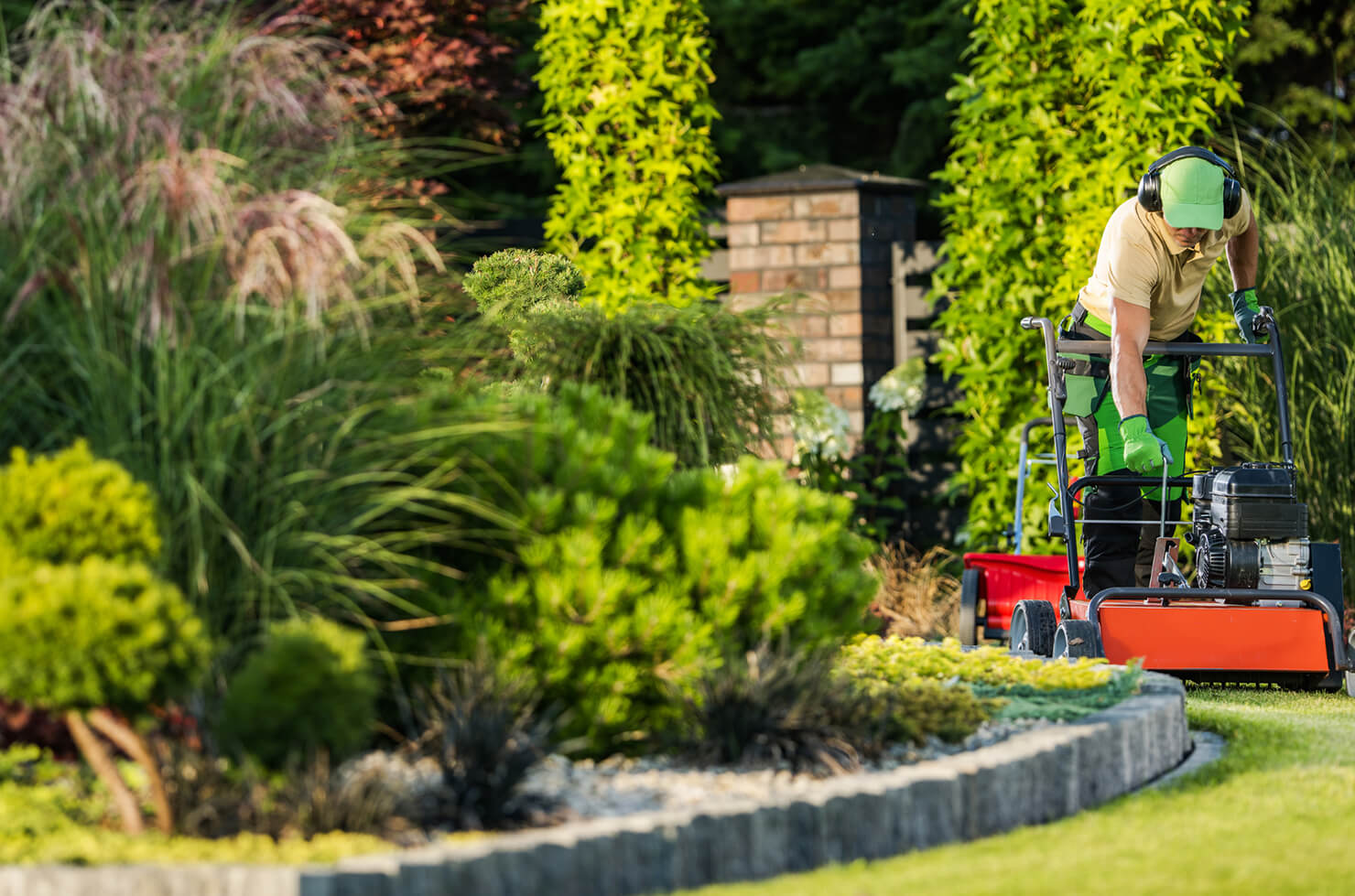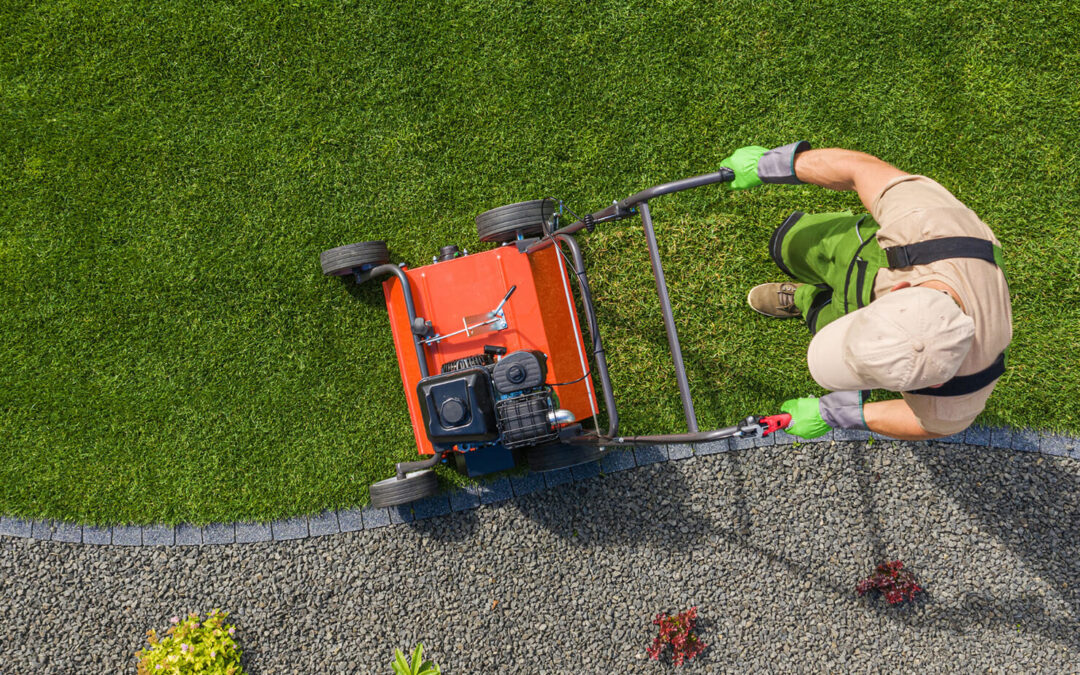How often should you aerate your lawn? This primarily depends on the type of soil, the level of lawn usage, and overall lawn health. For lawns with clay soil that are prone to compaction, you should aerate annually. If your lawn experiences high traffic from pets, kids, or gatherings, it may also benefit from being aerated once or even twice a year to maintain its resilience and health. For sandy or loamy soils which are less prone to compaction, aerating every two to three years is generally enough.
If you notice signs like water pooling, thatch build-up over half an inch, or difficulty in penetrating the soil with a simple tool, these are indicators that your lawn might need aeration soon.
What is Lawn Aeration?
Lawn aeration is a process that helps improve the health and appearance of your lawn by allowing air, water, and nutrients to penetrate deeper into the soil. This process involves creating small holes in the soil, which can be achieved through various methods like using a spike aerator or a plug aerator. Spike aerators simply poke holes into the ground with a solid, spike-like tine, while plug aerators remove 2-3 inch soil plugs from the lawn.
Why Should You Aerate Your Lawn?
Regular aeration, especially for lawns that experience heavy use or have highly compact soil, ensures your grass has the best possible conditions to thrive.
Here are some important reasons to aerate your lawn:
- Improves soil structure: Aeration helps break up compacted soil, allowing better air circulation within the soil. This improved air exchange promotes healthier root growth by enabling roots to expand more easily.
- Enhances nutrient uptake: By creating openings in the soil, aeration makes it easier for water, fertilizers, and other nutrients to penetrate the surface and reach the grass roots. Well-drained soils have access to essential nutrients that support vibrant growth.
- Assists water absorption: Aeration reduces runoff and improves water absorption during watering or rainfall. This not only helps in maintaining a moist soil environment but also conserves water and reduces the need for frequent watering.
- Promotes root growth: With better access to air, nutrients, and water, the roots of your grass can grow deeper and become more robust. Aeration breaks up soil layering to promote a stronger, more resilient lawn that can withstand stress and disease.
- Helps reduce thatch buildup: Thatch is a layer of organic matter that accumulates between the green grass blades and the soil surface. Aeration helps break down thatch by mixing the soil with the thatch layer, which then encourages decomposition by soil microbes.
- Enhances drought tolerance: A lawn with a well-aerated soil base and deeper root systems is more drought-tolerant. It can survive and stay green with less water, which is especially valuable in areas prone to dry conditions.
Factors Affecting the Frequency of Lawn Aeration
Every lawn is different, and the frequency with which you should aerate your lawn depends on several factors, including the type of soil, the usage of the lawn, and the overall health and maintenance practices.
Soil Composition and Compaction Levels
Soil composition refers to the mixture of different types of soil particles—sand, silt, and clay—each of which affects how well the soil type can support a healthy lawn. Soil compaction refers to how tightly the particles are pressed together.
Sandy Soil
Sandy soil has larger particles that create more space between them, allowing for good air and water flow. This soil type drains quickly and is less prone to compaction, so it generally requires less frequent aeration.
Aeration Frequency: Due to its larger particles and good drainage, sandy soil typically requires less frequent aeration, usually every 2-3 years.
Heavy Clay Soil
Clay soil has very fine particles that stick closely together, leading to poor drainage and reduced air flow. This type of soil can easily become compacted, making aeration a more frequent necessity, often annually, to maintain lawn health.
Aeration Frequency: Clay soil compacts easily and has poor drainage, necessitating aeration at least once a year to maintain lawn health.
Loamy Soil
Loamy soils are considered ideal for most lawns because they have a balance of sand, silt, and clay soils. They retain moisture and nutrients well while still providing sufficient drainage and air penetration. Loam soils may need less frequent aeration compared to clay, but more often than sandy soils, depending on other factors like traffic and thatch.
Aeration Frequency: Loamy soil benefits from aeration every 1-2 years, depending on factors such as traffic and thatch build-up, as it retains moisture well but is more prone to compaction than sandy soil.
Heavily Compacted Soil
Soil compaction occurs when the particles are pressed tightly together, reducing the pore space needed for air and water to move through the soil. Heavily compacted soil can severely restrict root growth and decrease the efficiency with which your lawn uses water and nutrients.
Lawns with heavy foot traffic or vehicle use are more likely to experience compaction. Children playing, pets running, and regular entertaining are common causes. These areas may need to be aerated once or even twice a year.
Symptoms of a soil compaction include pooling water after rain, a hard surface that’s difficult to penetrate with a screwdriver or soil probe, and grass that easily yellows or dies back due to stress. You can perform a simple test by trying to insert a garden fork or screwdriver into the soil. If it’s difficult to push in, your soil may be compacted and in need of aeration.
Lawn Usage and Traffic Patterns
The more a lawn is used, the more likely it is to become compacted, which then necessitates more frequent aeration to maintain its health and appearance.
High Traffic
Lawns that serve as play areas for kids, pets, or as common spaces for gatherings experience more foot traffic. This consistent pressure can quickly compact the soil, particularly if the underlying soil is clay or loamy. As the soil becomes compacted, it’s harder for roots to grow, water to infiltrate, and nutrients to be absorbed. This can lead to poorer grass health and a less vibrant appearance.
Aeration Frequency: Such lawns might benefit from aeration once or twice a year to alleviate compaction and allow grass roots to recover and expand.
Moderate Traffic
If a lawn is used more casually, like for light activities or less frequent gatherings, the soil may not compact as quickly. While not as severe as with high traffic, moderate use can still lead to some compaction, especially over time or in areas with less ideal soil compositions.
Aeration Frequency: Aerating every 1-2 years is typically sufficient for these lawns to prevent any long-term damage from compaction.
Low Traffic
Lawns that are largely ornamental or infrequently walked on suffer from minimal compaction from foot traffic. These areas are unlikely to become significantly compacted from use, so any soil compaction would be more due to natural settling or possibly the type of soil.
Aeration Frequency: Aeration might only be necessary every few years, primarily to manage natural soil compaction and maintain overall soil health.
Climate and Weather Conditions
Environmental factors such as climate and weather conditions influence your lawn’s soil moisture levels, temperature, soil drainage, and the growing patterns of grass, all of which can impact how well your lawn responds to aeration.
Temperature and Growing Season
- Warm Climates: In warm regions where grass remains active and grows year-round, aeration can be beneficial more frequently, especially if the soil is prone to compaction. Warm-season grasses are best aerated in late spring or early summer when they’re actively growing.
- Cool Climates: For cool-season grasses, the best times to aerate are during the growth spurts in early spring and early fall. This timing allows the grass to heal quickly and fill in any open areas left by the removal of soil cores.
Rainfall and Moisture Levels
- Wet Conditions: In areas with high rainfall, the soil surface can become saturated and more prone to compaction under traffic. Regular aeration helps improve drainage and prevents waterlogging, which can suffocate grass roots. However, it’s important not to aerate when the soil is too wet, as this can lead to further soil compaction.
- Dry Conditions: Arid climates or periods of drought can harden the soil, making it difficult for roots to penetrate and for water to infiltrate. Aeration in such conditions should be timed to coincide with watering or rain forecasts to maximize water absorption and benefit to the grass roots.
Signs Your Lawn Needs Aeration
Recognizing when your lawn needs aeration will help maintain its health and vitality. Check for the following soil conditions to help you determine if and when your lawn needs aeration.
- Water Pooling: If you notice water standing on your lawn after rain or watering, it indicates that your soil has poor absorption, likely due to compaction. Aeration can help by creating channels through which water can more easily penetrate the soil.
- Soil Hardness: If the ground feels hard to the touch, or if you struggle to insert a garden tool or screwdriver into the soil, it’s a strong indication that the soil is compacted. Aeration will help loosen the soil and improve root penetration.
- Thin or Bare Patches: When grass begins to thin or bare patches appear along the soil line, it might be a sign that the roots are not getting enough air, water, or nutrients due to compacted soil or excessive thatch. Aerating the lawn can open up the soil and help nutrients reach the root zone.
- Thatch Buildup: Thatch is a layer of organic debris such as dead grass and roots that accumulates between the soil surface and the live grass. If this layer is thicker than one-half inch, it can block water, air, and nutrients from reaching the soil. Aeration helps break up this layer and facilitates decomposition.
- Lawn Discoloration: If your lawn is not maintaining a healthy green color and instead looks yellowish or brown, it could be struggling due to a lack of essential nutrients or water, often caused by compacted soil.
- Heavy Use: Lawns that endure heavy foot traffic from pets, children playing, or frequent social gatherings are more prone to soil compaction. If your lawn is a high-traffic area, regular aeration might be necessary.
- Poor Fertilizer Response: If your lawn doesn’t seem to respond well to fertilization, it could be because the nutrients aren’t able to infiltrate the compacted soil and reach the roots.
Tips for Effective Lawn Aeration
Choose the Right Time
For cool-season grasses, the best times are early spring or early fall. This allows the grass to heal and grow vigorously during its natural growth spurts. For warm-season grasses, late spring through early summer is ideal because this is when they enter their peak growing phase. Aerating during these periods ensures that the grass can recover quickly and take full advantage of the increased air, water, and nutrient flow to the roots.
Water Your Lawn First
Aerating works best when the soil is slightly moist but not saturated. Watering your lawn one to two days before you plan to aerate can soften the soil, making it easier to remove cores and more effective at accepting the benefits of aeration. This pre-watering is especially important in drier climates or seasons, as it prevents the aerator from merely compacting the dry soil further.
Use the Right Equipment
Choosing the correct aerator depends on your lawn’s specific needs. Core aerators, which remove plugs of soil, are generally more effective than spike aerators, especially for lawns with heavy clay content or severe compaction. Core aeration provides more space for roots to expand and for essential nutrients to penetrate the soil.
Aerate Thoroughly
Make sure to cover the lawn evenly when aerating. Multiple passes might be necessary in areas that are heavily compacted or have dense clay soil. It’s important to overlap each pass slightly to ensure no area is missed, as uneven aeration can lead to patchy grass growth.
Leave the Cores on the Lawn
After aerating, leave the extracted soil cores on the lawn to decompose and filter back into the holes you’ve created. This returns organic matter and nutrients to the soil, which can help maintain its fertility. The cores usually break down within a few weeks, depending on weather conditions.
Follow Up with Care
After aeration, it’s a good time to add seed, fertilizer, and water to maximize the health and appearance of your lawn. Seeding right after aeration allows the seeds to lodge into the holes and establish a strong root system. Similarly, fertilizing after aeration can help nutrients reach deeper into the soil.
Should You Hire Someone to Aerate Your Lawn?

If you’re comfortable with the effort and have the right tools, DIY lawn aeration can be a cost-effective option. Doing the job yourself can save money, particularly if you already own an aerator or if you can borrow one from a neighbor or friend.
However, for those with larger properties, health considerations, or a lack of time, hiring a professional may be the more practical choice. Professionals not only bring the right equipment and expertise but also take the guesswork and physical strain out of the equation, which can be particularly valuable for ensuring your lawn remains in top condition.

